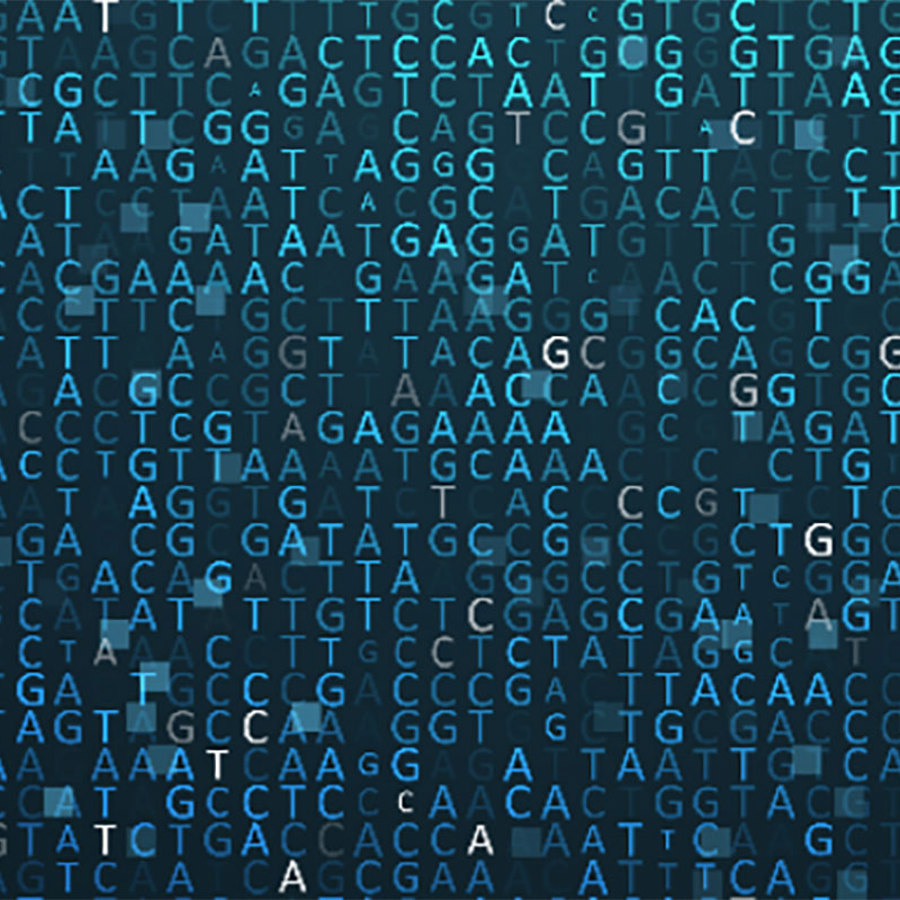
Do siblings match at all or half of their loci?
September 5, 2012

- Related Topics:
- Genetic testing,
- Relatedness,
- Paternity tests
A curious adult from Australia asks:
“In a DNA test that looks at relationships, do siblings match at all or half of their loci?”
Even though siblings share about half of their DNA, they can share any number of genetic markers in a “sibling DNA test”. They might match up at all of the markers or at none of them. Or more likely, they will match up at some number in between.
This might seem weird at first. After all, two siblings share half of their DNA. So they should share half of their DNA in a DNA test too, right?
Well, this would be true if a DNA test looked at all of a person’s DNA. Unfortunately, very few of them do. Instead, they look at only 15 or 20 out of millions and millions of possible spots.
Well, it turns out that siblings only share 50% of their DNA on average. They might share more or less, purely due to chance. (Click here to learn why the true amount may be higher or lower.)
And the “sibling DNA tests” you're asking about don’t look at all your DNA. They work the same way as paternity tests, and look at only 15 or 20 out of millions and millions of possible spots.
Because these tests look at so few markers, by chance, one sibling might end up sharing only some DNA at the markers tested. Or they might not share any DNA at all.

Still Siblings Even with No Matches
A DNA test looks at certain parts of the DNA called markers. Different markers are given different numbers to distinguish them from each other. (Click here to learn why they are numbers.) So, a certain marker called THO1 might come in 6, 7, 8, 9.3, or a few other possible numbers.
Let’s go through an example by looking at the THO1 marker in Laura’s family to show why siblings don’t always share the same number of markers. Here are Laura’s parent’s markers at THO1:
|
Marker |
Dad |
Mom |
|
THO1 |
6, 9.3 |
7, 8 |
Notice that each parent has two different markers at THO1. This is because each of us gets half our DNA from our mom and the other half from our dad.
So Laura’s dad got a 6 from one parent and a 9.3 from the other. Laura’s mom got a 7 from one parent and an 8 from the other.
Now let’s add Laura to the mix. This is one possible way things could have shaken out:
|
Marker |
Dad |
Mom |
Laura |
|
THO1 |
6, 9.3 |
7, 8 |
6,7 |
Laura’s dad gives Laura a 6 at THO1 and Laura’s mom gives her a 7. So Laura has a 6 and a 7 at THO1.
Of course it didn’t have to turn out that way. She might have ended up with any of the other three possible combinations instead (6,8; 9.3,7; 9.3,8). Which marker you get from each parent is totally random.
Now let’s see what happened with Laura’s sister, Jane:
|
Marker |
Dad |
Mom |
Laura |
Jane |
|
THO1 |
6, 9.3 |
7, 8 |
6, 7 |
9.3, 8 |
As you can see, Jane and Laura didn’t match at any of the markers even though they share half their DNA. Again, it didn’t have to end up this way. Any of these four combinations is possible:
|
Jane’s Possible THO1 Markers |
Match with Laura? |
|
6, 7 |
Yes. |
|
9.3, 7 |
Half the same as Laura. |
|
6, 8 |
Half the same as Laura. |
|
9.3, 8 |
No. Completely different from Laura. |
Jane matches Laura completely in the first case, half matches her in the next two cases, and does not match her at all in the last case. As you can see, there are many possibilities just for one marker. Even though Jane and Laura share half of their DNA, they can match, half match, or not match at all at a particular marker.
Let’s add another marker called D13S539 to our story.
|
Marker |
Dad |
Mom |
Laura |
Jane |
|
D13S539 |
5, 10 |
6, 12 |
5, 12 |
? |
Laura’s dad has a 5 and a 10 for D13S539, while her mom has a 6 and a 12. Laura has a 5 and a 12. Using what we learned at THO1, we see that Jane could be any of the following:
|
Jane’s Possible D13S539 Markers |
Match with Laura? |
|
5, 6 |
Half the same as Laura. |
|
5, 12 |
Yes. |
|
10, 6 |
No. Completely different from Laura. |
|
10, 12 |
Half the same as Laura. |
Again, Jane can share 0, 1, or 2 of Laura’s markers at D13S539.
Now let’s add the two markers together. Here are the two extreme possibilities using just these two markers. In the first, Jane and Laura share all four or 100% of their markers:
|
Marker |
Dad |
Mom |
Laura |
Jane |
|
THO1 |
6, 9.3 |
7, 8 |
6, 7 |
6, 7 |
|
D13S539 |
5, 10 |
6, 12 |
5, 12 |
5, 12 |
And in this one, Laura and Jane’s markers don’t match at all:
|
Marker |
Dad |
Mom |
Laura |
Jane |
|
THO1 |
6, 9.3 |
7, 8 |
6, 7 |
9.3, 8 |
|
D13S539 |
5, 10 |
6, 12 |
5, 12 |
6, 10 |
In this case it is possible to match at 0, 1, 2, 3, or all 4 sites. Any combination is possible even though Laura and Jane share about 50% of their DNA! It all depends on what markers you’re looking at.
A real DNA test looks at more markers. Now there is even a wider range of possibilities with the most likely being something around half.
So that is your answer. Siblings can match at any number of sites in a DNA test. Next, let’s see what that means for tests that try to figure out if two people are siblings.
As you’ll see, these siblingship tests can be very tricky to interpret. And they don’t always give a clear result.
Sibling DNA Tests can be Unclear
Stan and Pierce are wondering if they are brothers, so they get a siblingship DNA test done. Here are their results:
|
Marker |
Stan |
Pierce |
|
CSF1PO |
11, 11 |
12, 12 |
|
D2S1338 |
18, 20 |
17, 20 |
|
D3S1358 |
5, 20 |
5, 17 |
|
D5S818 |
11, 18 |
11, 17 |
|
D7S820 |
9, 10 |
8, 11 |
|
D8S1179 |
12, 12 |
12, 15 |
|
D13S317 |
9, 13 |
8, 12 |
|
D16S539 |
10, 15 |
10, 15 |
|
D18S51 |
12, 20 |
13, 20 |
|
D19S433 |
14, 16 |
13, 15 |
|
D21S11 |
30, 32 |
29, 30 |
|
FGA |
24, 25 |
23, 25 |
|
THO1 |
5, 9.3 |
6, 7 |
|
TPOX |
8, 10 |
8, 10 |
|
vWA |
17, 17 |
17, 19 |
Are they siblings? I can’t tell.
A DNA testing company would use various statistical methods to try to figure it out. And because it is so tricky, they would only be able to tell them how likely they are to be related.
Now, if we manage to get Stan’s biological parents’ marker information, the picture becomes much clearer. Stan and Pierce are definitely siblings.
|
Marker |
Stan’s Dad |
Stan’s Mom |
Stan |
Pierce |
|
CSF1PO |
11, 12 |
11, 12 |
11, 11 |
12, 12 |
|
D2S1338 |
17, 18 |
15, 20 |
18, 20 |
17, 20 |
|
D3S1358 |
5, 5 |
17, 20 |
5, 20 |
5, 17 |
|
D5S818 |
17, 18 |
11, 11 |
18, 11 |
17, 11 |
|
D7S820 |
9, 11 |
8, 10 |
9, 10 |
11, 8 |
|
D8S1179 |
12, 15 |
12, 14 |
12, 12 |
12, 15 |
|
D13S317 |
8, 9 |
12, 13 |
9, 13 |
8, 12 |
|
D16S539 |
15, 15 |
10, 20 |
15, 10 |
15, 10 |
|
D18S51 |
20, 20 |
12, 13 |
20, 12 |
20, 13 |
|
D19S433 |
13, 16 |
14, 15 |
16, 14 |
13, 15 |
|
D21S11 |
29, 32 |
30, 31 |
32, 30 |
29, 30 |
|
FGA |
23, 24 |
20, 25 |
24, 25 |
23, 25 |
|
THO1 |
5, 7 |
6, 9.3 |
5, 9.3 |
7, 6 |
|
TPOX |
10, 10 |
8, 11 |
10, 8 |
10, 8 |
|
vWA |
17, 17 |
17, 19 |
17, 17 |
17, 19 |
Even though Stan and Pierce do not have the same copies of each of the markers, they both always have one marker from their mom and one marker from their dad. Which means they are almost certainly brothers.
So there you have it. With simple DNA tests, siblings can match at any number of markers. They can match at all, none, or somewhere in between.
This has nothing to do with how related they actually are at the DNA level. Siblings are about 50% related.

This is why some of the newer, ancestry-type tests are so much more intuitive. Because they look at over one million markers, it quickly becomes obvious whether someone shares half their DNA or not. Click here to learn more about these tests.

Author: Mei-Hsin Cheng
When this answer was published in 2012, Mei-Hsin was a Ph.D. candidate in the Department of Genetics, studying epigenetic regulation in drosophila in Joseph Lipsick’s laboratory. Mei-Hsin wrote this answer while participating in the Stanford at The Tech program.
 Skip Navigation
Skip Navigation
